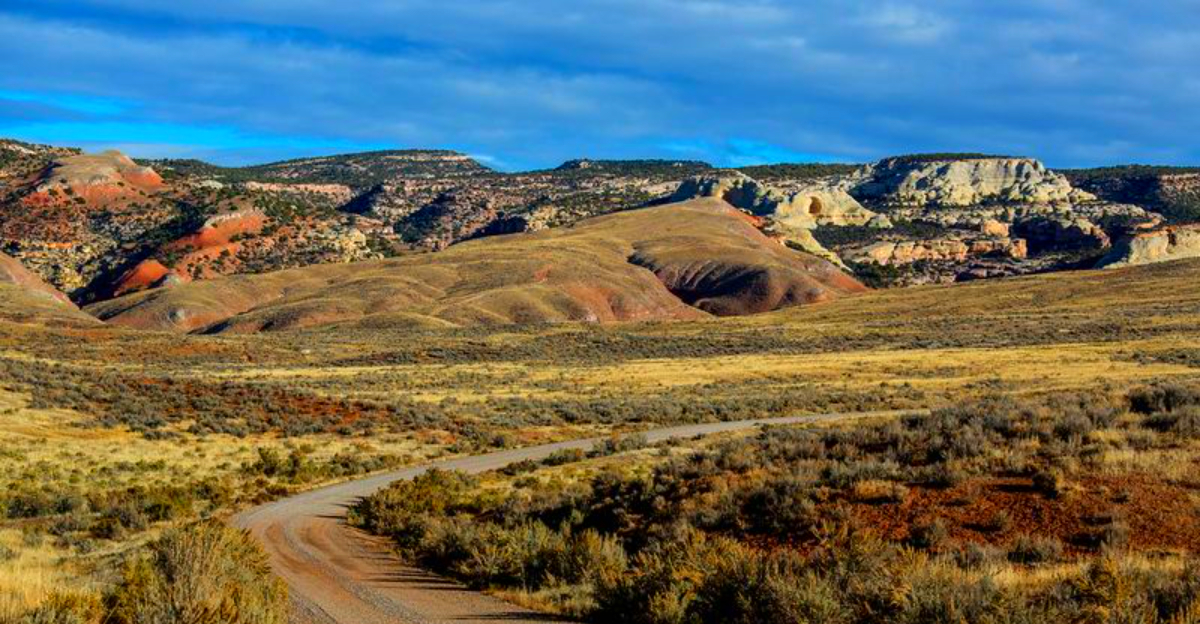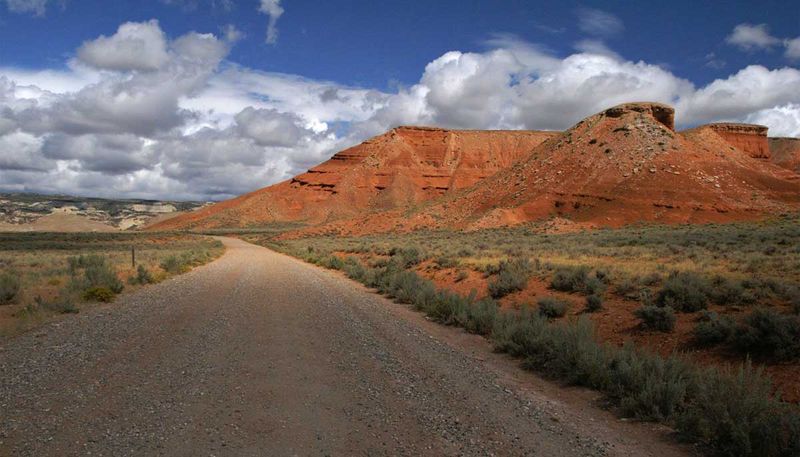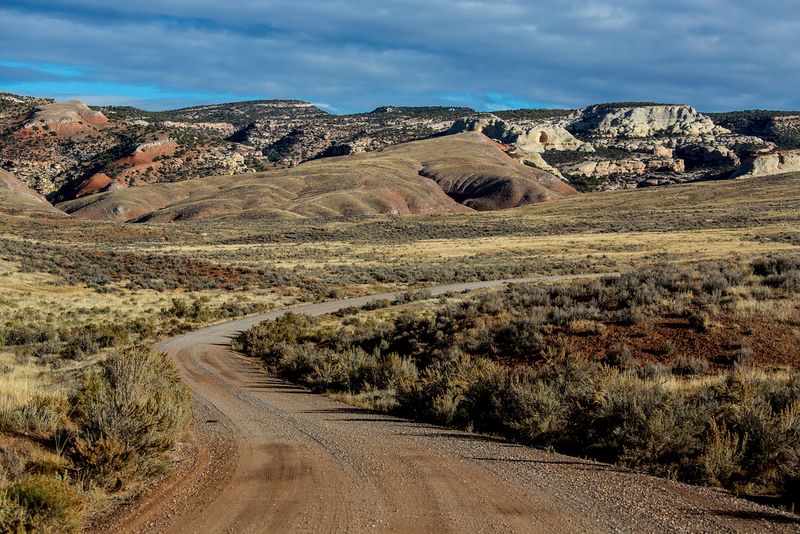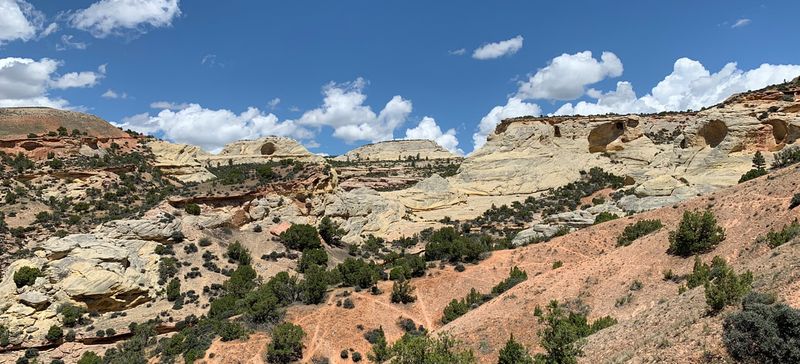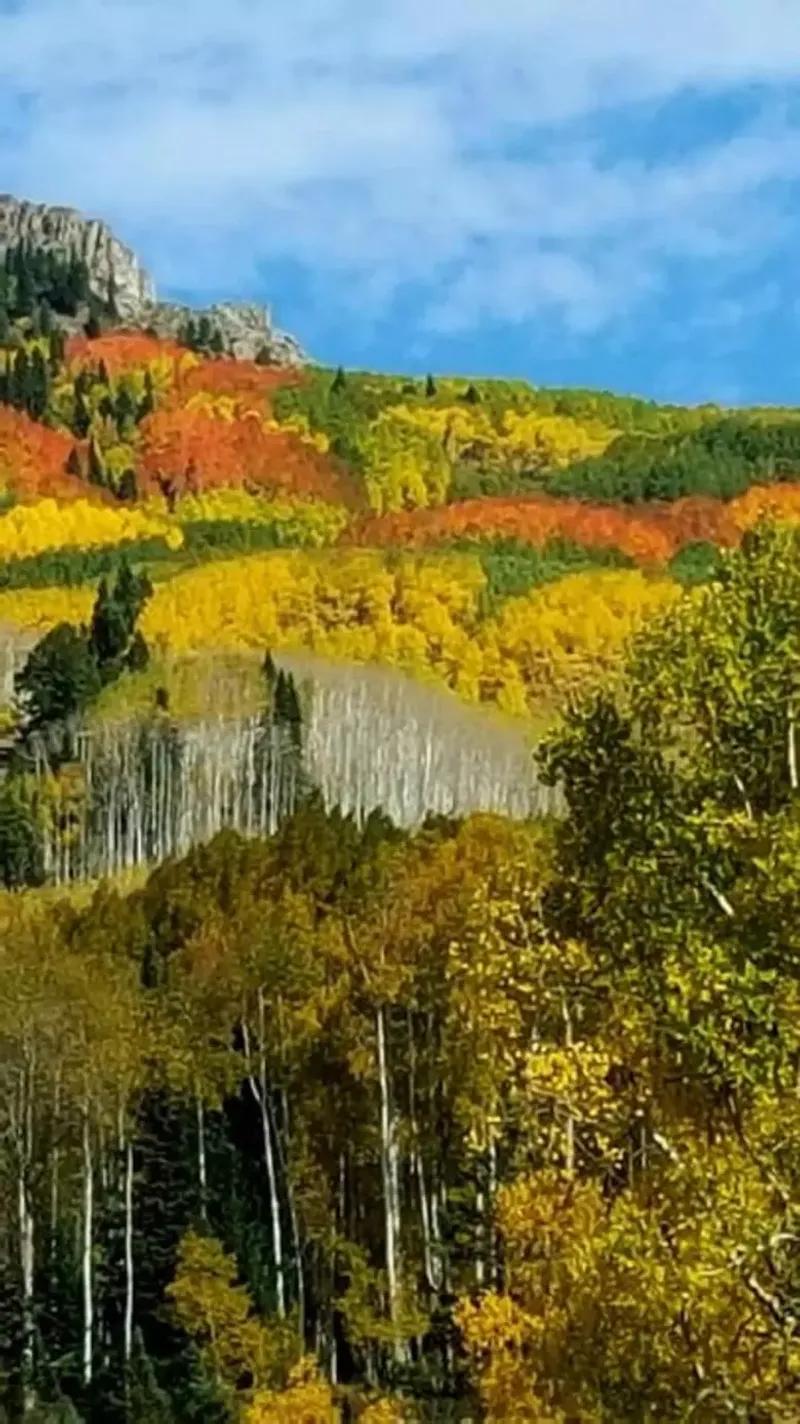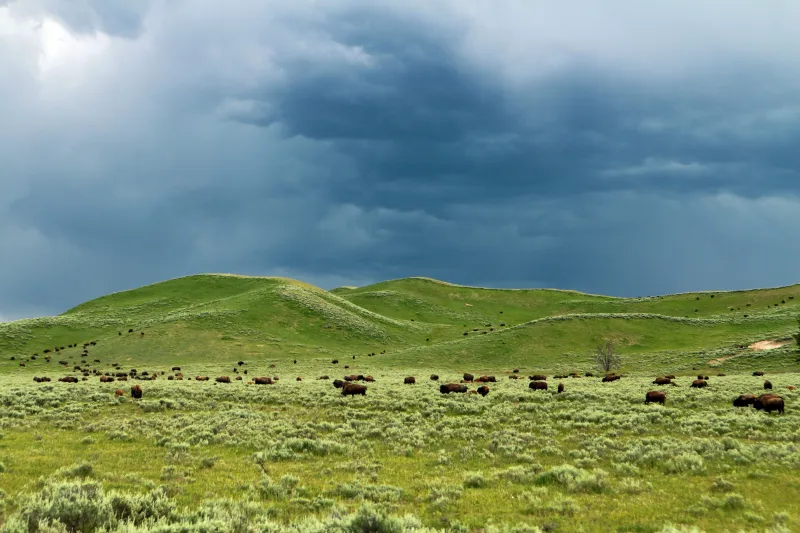Wyoming’s Red Gulch/Alkali Backcountry Byway offers one of the state’s most spectacular fall drives through untamed wilderness. This 32-mile adventure winds through the Bighorn Mountains’ foothills, revealing ancient dinosaur tracks, colorful rock formations, and breathtaking autumn scenery. When cottonwoods turn golden and the air grows crisp, this remote route transforms into a photographer’s paradise that few travelers ever discover.
1. A 32-Mile Journey Through Bighorn Country
Stretching from Shell in the north to Hyattville in the south, this backcountry byway carves a 32-mile path through Big Horn County’s most rugged terrain. The route follows ancient animal trails and old sheepherder paths that wind through the Bighorn Mountains’ foothills.
Fall transforms this drive into pure magic as aspens shimmer gold against red rock walls. The northern entrance sits just four miles west of Shell off Highway 14, while the southern access point connects near Hyattville on Wyoming Highway 31.
Most travelers complete the full journey in 2-3 hours, but smart adventurers budget an entire day for stops and exploration.
2. Gravel Roads Demand Respect and Preparation
Forget smooth pavement – this adventure rolls over improved gravel and dirt surfaces that challenge both vehicle and driver. While passenger cars can navigate dry sections, a high-clearance vehicle opens up the full experience without stress or scraping.
Weather changes everything on these backcountry roads. Spring snowmelt and summer thunderstorms can turn peaceful gravel into slippery, impassable mud within minutes. Smart travelers check conditions at entrance kiosks before committing to the full route.
The driving season runs May through October, with September and early October offering the perfect combination of stable roads and peak fall colors.
3. Complete Wilderness Means Zero Services
Once you leave the highway, civilization disappears completely. No gas stations, convenience stores, cell towers, or emergency services exist along the entire 32-mile route – just you, your vehicle, and the wild Wyoming landscape.
Experienced backcountry travelers pack like they’re heading into the wilderness, because they are. Water, food, spare tire, basic tools, and emergency supplies aren’t suggestions – they’re survival essentials when the nearest help sits hours away.
This isolation creates the byway’s greatest appeal: absolute solitude in an increasingly connected world where true quiet has become a rare and precious commodity.
4. Ancient Geological Wonders Tell Earth’s Story
Millions of years of geological drama unfold along this route through towering hoodoos, deep canyons, and table rocks that showcase Wyoming’s incredible earth history. Wind-carved red formations from the Chugwater period create an almost alien landscape that changes color with shifting light.
Three Wilderness Study Areas – Alkali Creek, Medicine Lodge, and Trapper Creek – border the byway, protecting pristine ecosystems where wildlife roams freely. These areas offer hiking trails that lead to hidden canyons and viewpoints most visitors never discover.
Fall light transforms these rock formations into a painter’s palette of reds, oranges, and purples that photographers dream about capturing.
5. Dinosaur Footprints Frozen in Time
About five miles from the northern entrance, the Red Gulch Dinosaur Tracksite preserves actual dinosaur footprints from 160-180 million years ago. These Middle Jurassic tracks mark where massive creatures once walked across ancient mudflats that later turned to stone.
Beyond prehistoric giants, human history spans 12,000 years in this area, from Paleo-Indian hunters to more recent sheepherders. Stone cairns built by late 1800s ranchers still dot the landscape like ancient monuments to frontier determination.
The nearby Medicine Lodge State Archaeological Site features petroglyphs that tell stories of Native American cultures who called these canyons home for countless generations before European settlement.
6. Dramatic Vistas Reward Bold Travelers
Every turn reveals new drama as the Bighorn Mountains rise majestically above deep canyons painted in brilliant autumn colors. Morning and evening light creates magical moments when red rocks glow like embers against golden cottonwoods and deep blue skies.
Unlike crowded scenic highways, this remote route offers solitude that’s become increasingly rare in our busy world. Wildlife sightings happen regularly – deer, elk, and various birds treat this wilderness as their private sanctuary.
Photographers and nature lovers find endless subjects here, from sweeping landscape vistas to intimate details of weathered rock formations and delicate desert wildflowers blooming against all odds.
7. Safety Planning Makes Adventure Possible
Weather in Wyoming’s high country changes faster than most people expect, turning sunny skies into dangerous storms within hours. Even summer rain can wash out road sections or create treacherous mud that traps unprepared vehicles for days.
Both entrance points feature information kiosks with current road conditions – always check these before starting your journey. GPS signals often disappear in remote canyons, making paper maps and local knowledge invaluable backup resources.
Pack like you’re entering true wilderness: extra water, emergency food, warm clothes, basic tools, spare tire, and some form of emergency communication device for worst-case scenarios in this beautiful but unforgiving landscape.
